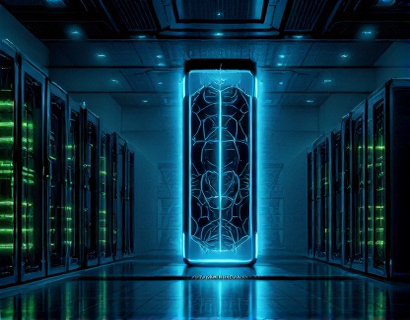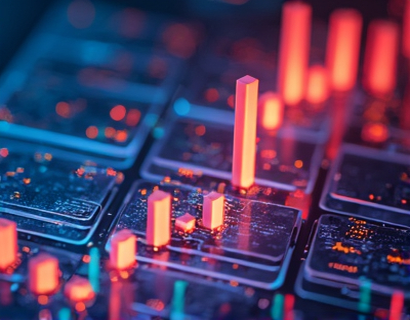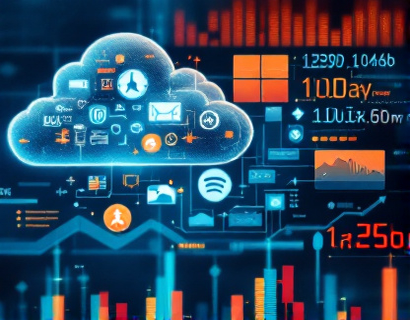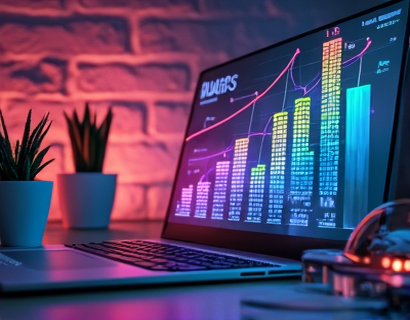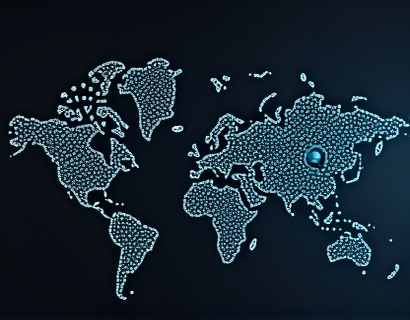Decentralized AI and Crypto: Revolutionizing Ucosystem Applications for Enhanced Digital Experiences
The intersection of decentralized technologies, artificial intelligence, and cryptocurrency is giving rise to a new era of digital applications. This convergence is not just a technological advancement but a paradigm shift in how we interact with digital services. The fusion of these elements is creating what is known as the Ucosystem, a term used to describe the ecosystem built on decentralized principles, powered by AI, and fueled by cryptocurrency. This article delves into the transformative impact of this synergy, exploring how it is enhancing user engagement and redefining digital interactions.
The traditional centralized model of digital services has been dominated by a few large corporations, often leading to issues such as data privacy concerns, single points of failure, and limited user control. Decentralized applications, or dApps, aim to address these issues by distributing control across a network of nodes, ensuring transparency, security, and user sovereignty. When AI is integrated into this decentralized framework, the potential for innovation becomes immense.
Understanding Decentralized AI
Decentralized AI refers to AI systems that operate on a distributed network, leveraging the computational power of multiple nodes rather than relying on a central server. This approach not only enhances scalability and resilience but also promotes fairness and reduces the risk of bias, as the training data and models are distributed and verified by the network.
The core of decentralized AI lies in federated learning, a method where AI models are trained across multiple decentralized devices or servers holding local data samples, without exchanging them. This ensures that sensitive data remains on the device, enhancing privacy and security. By aggregating updates from various nodes, the AI model improves over time, making it more robust and adaptable to diverse scenarios.
Cryptocurrency and Decentralized Finance (DeFi)
Cryptocurrency plays a pivotal role in the Ucosystem by providing a decentralized medium of exchange, storage, and value representation. DeFi, or decentralized finance, builds on blockchain technology to offer financial services without intermediaries. This includes lending, borrowing, trading, and yield farming, all executed through smart contracts on a blockchain network.
The integration of cryptocurrency and DeFi with decentralized AI creates a powerful ecosystem where users can leverage AI-driven insights for better financial decisions, while maintaining full control over their assets. For instance, AI algorithms can analyze market trends, predict price movements, and optimize trading strategies, all within a decentralized and transparent framework.
Enhanced User Engagement through AI-Driven Ucosystem Applications
The combination of AI and decentralization is revolutionizing user engagement in digital applications. AI-driven personalization is a key feature, allowing applications to adapt to individual user preferences and behaviors. In a decentralized context, this personalization is achieved without compromising user privacy, as data is kept local and only aggregated insights are shared.
Consider a decentralized social media platform powered by AI. Such a platform can use AI to curate content based on user interests, ensuring a more relevant and engaging experience. Unlike centralized platforms, user data is not exploited for advertising purposes; instead, users can monetize their data through cryptocurrency rewards, creating a more equitable and user-centric model.
Transformative Interactions in the Digital Landscape
The Ucosystem is not just about enhancing individual applications; it's about transforming the entire digital interaction landscape. Decentralized AI applications can facilitate more secure, transparent, and efficient interactions between users, businesses, and services. For example, in the realm of supply chain management, AI can optimize logistics and inventory management, while blockchain ensures traceability and authenticity of products.
Another transformative application is in the field of healthcare. Decentralized AI can analyze medical data from various sources, providing insights for diagnosis and treatment without violating patient privacy. Smart contracts can automate the distribution of medical supplies, ensuring that resources are allocated efficiently and transparently.
Challenges and Considerations
Despite the promising potential, the Ucosystem faces several challenges. Scalability remains a significant issue, as blockchain networks struggle to handle high transaction volumes. However, advancements in layer 2 solutions and cross-chain interoperability are addressing these concerns. Additionally, regulatory frameworks are evolving to accommodate decentralized technologies, ensuring that innovation is balanced with consumer protection and ethical standards.
User education is also crucial. The complexity of decentralized systems and AI can be daunting for the average user. Initiatives to demystify these technologies and provide user-friendly interfaces are essential for widespread adoption. The Ucosystem must prioritize accessibility and inclusivity to ensure that the benefits of these advancements are available to all.
Future Prospects
The future of the Ucosystem is bright, with continuous advancements in AI, blockchain, and cryptocurrency. As more developers and innovators join this space, we can expect to see more sophisticated and diverse applications. The integration of other emerging technologies, such as quantum computing and edge computing, will further enhance the capabilities of decentralized AI systems.
The ultimate goal of the Ucosystem is to create a digital world where users have true control over their data and digital identities, where transactions are secure and transparent, and where innovation is driven by a community of tech-savvy individuals. By leveraging the power of decentralized AI and cryptocurrency, we are not just improving digital experiences; we are redefining the very fabric of the digital landscape.










